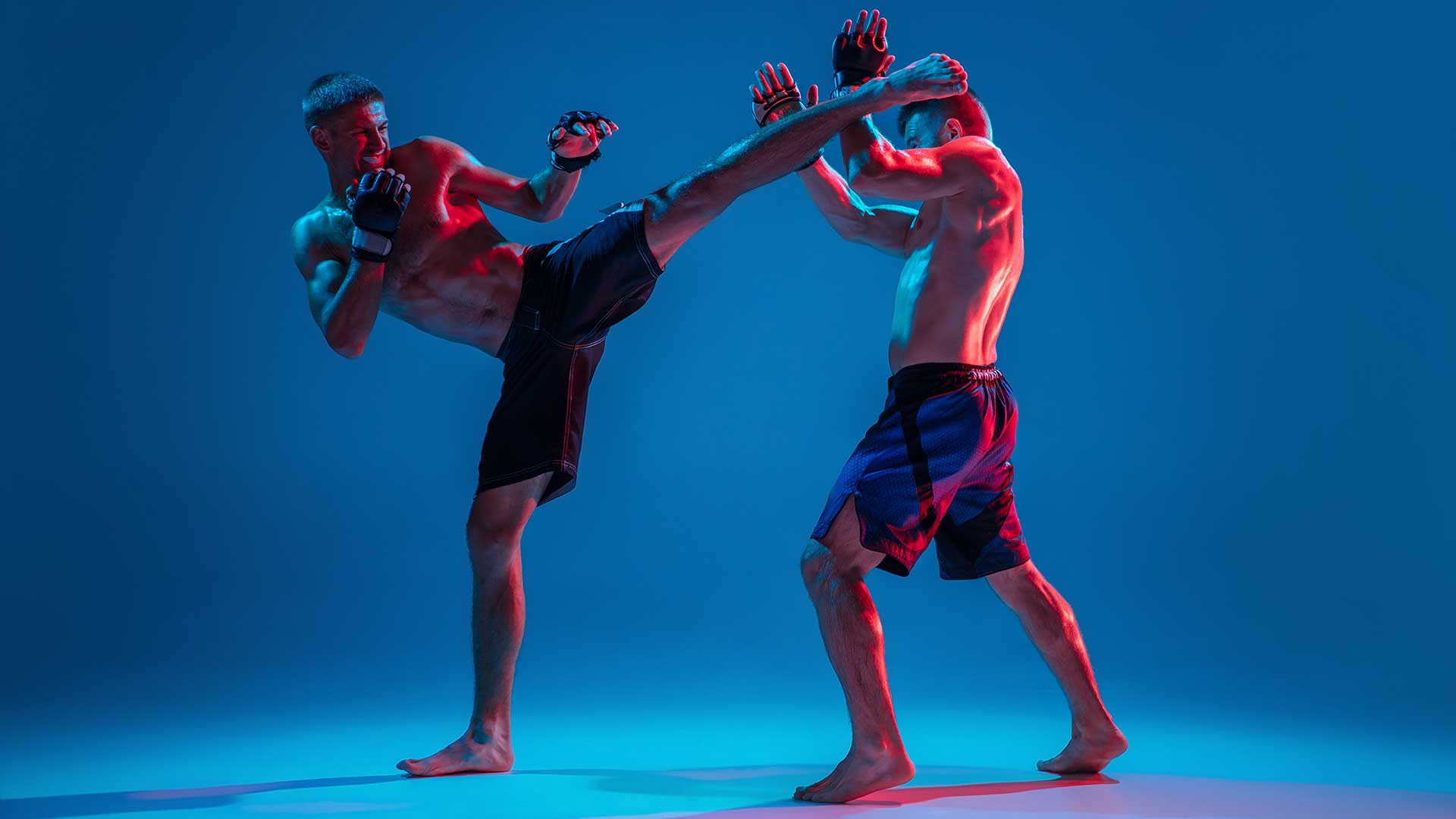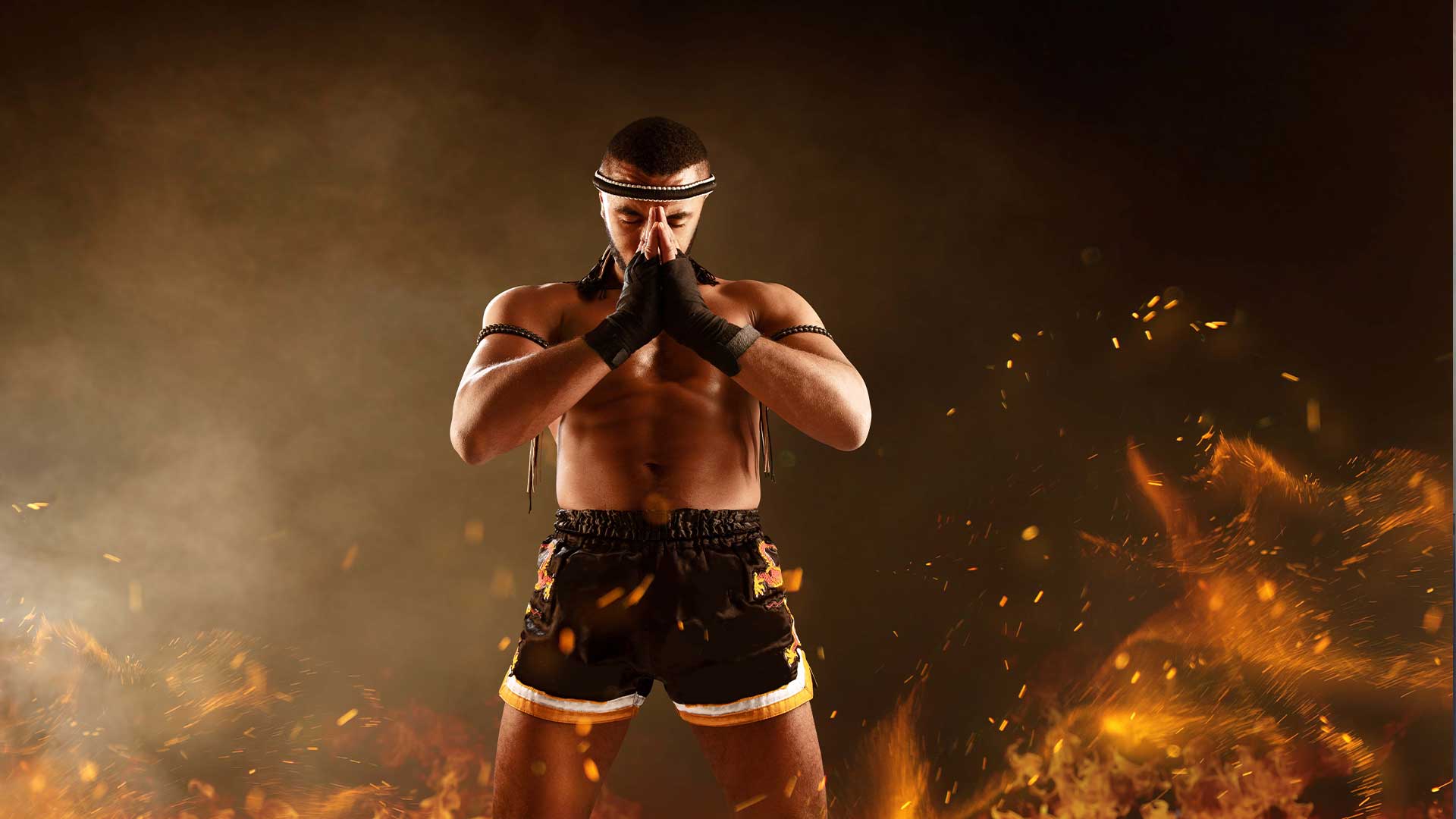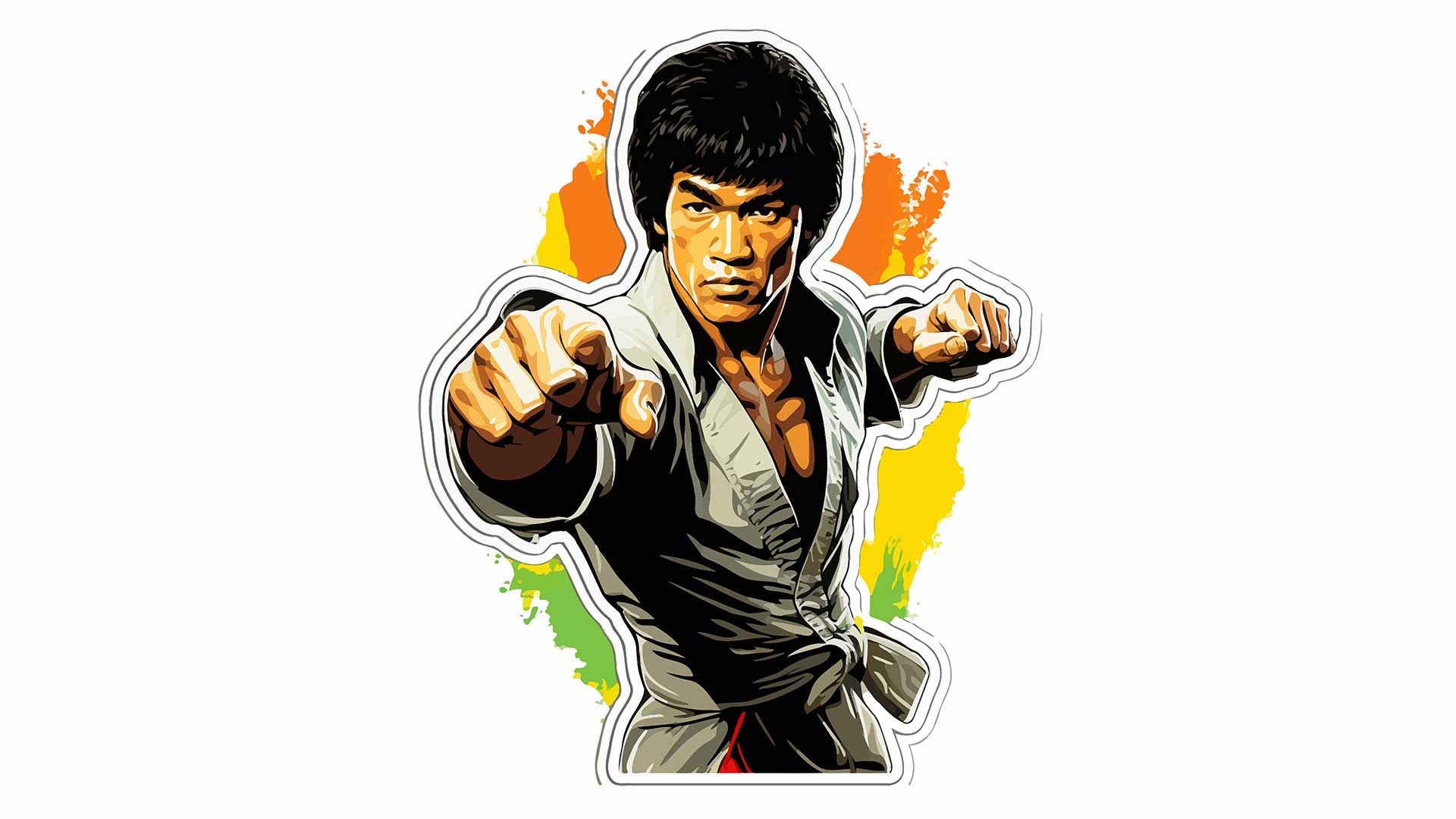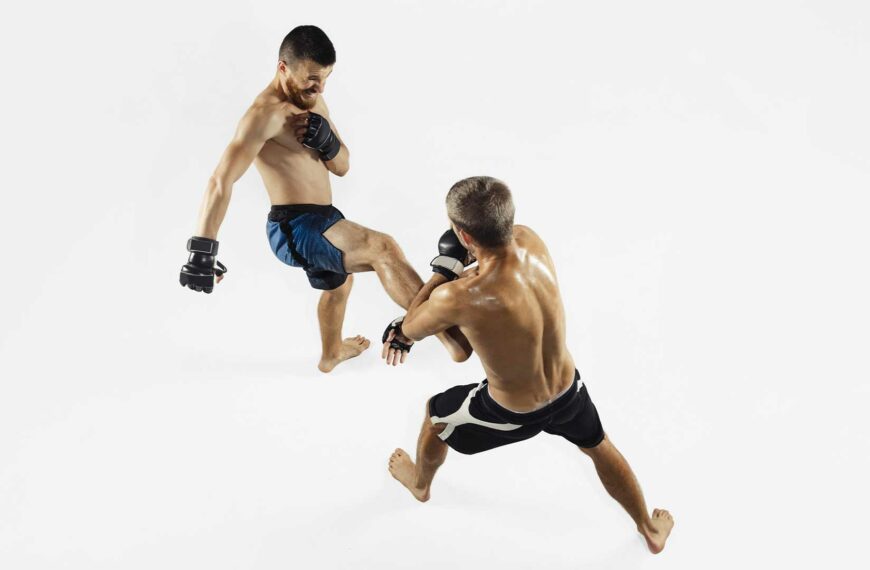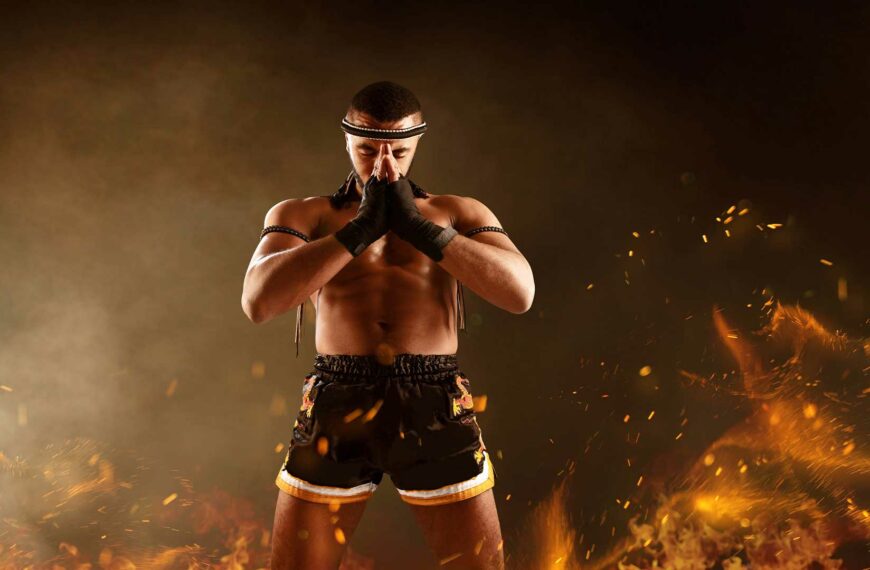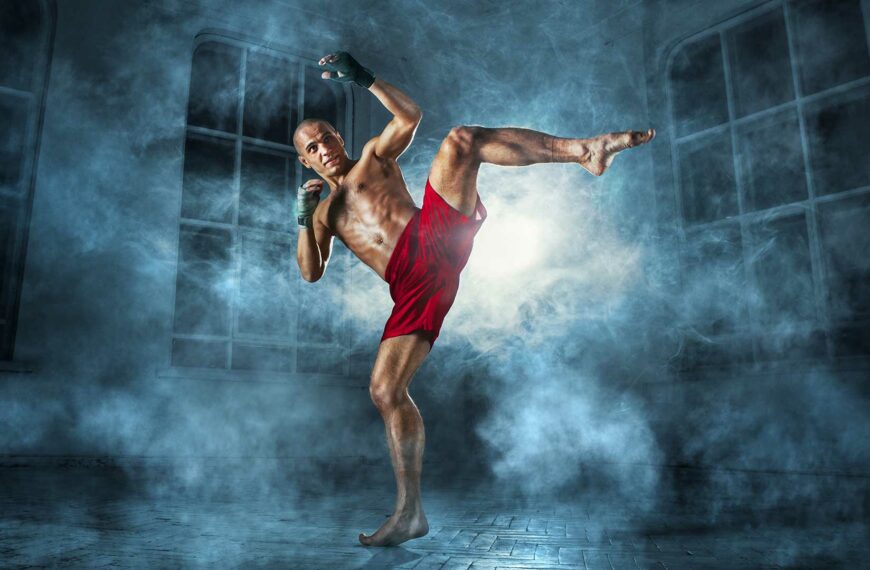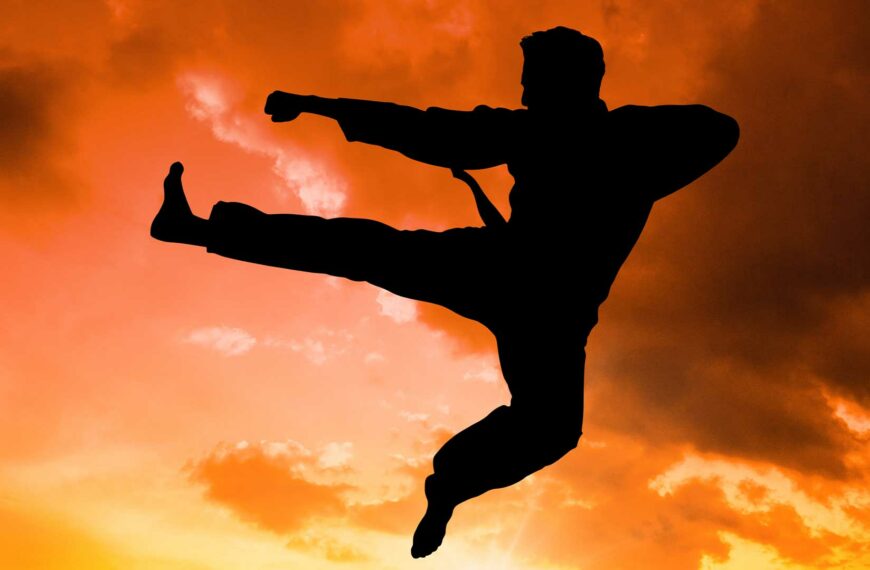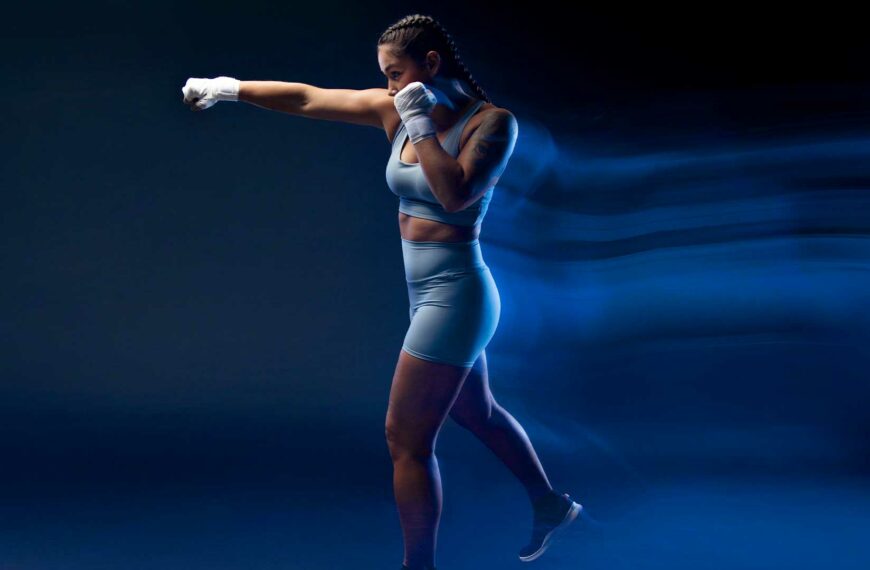What You’ll Learn About Muay Thai vs Kickboxing
- The origins and cultural significance of Muay Thai and Kickboxing.
- The differences in striking techniques, movement and stance, kicking techniques, volume and pace, clinching and grappling, and defense techniques.
- The benefits of training in both Muay Thai and Kickboxing and how to choose the right martial art for you.
Muay Thai and Kickboxing are two popular stand-up fighting martial arts that have gained significant traction in the combat sports world. Both disciplines attract enthusiasts and practitioners who are looking to enhance their striking skills, improve their fitness, or compete at a professional level. In this article, we will provide a comprehensive comparison between Muay Thai and Kickboxing, highlighting the key differences and similarities between the two.
Origins and Background
Muay Thai: The Art of Eight Limbs
Muay Thai, also known as “The Art of Eight Limbs,” originated in Thailand and holds deep cultural significance in the country. Historically, Muay Thai was developed as a form of close-combat fighting for the Thai military. Over time, it evolved into a competitive sport and eventually became an integral part of Thai culture. The art encompasses a wide range of techniques, including punches, kicks, knee strikes, and elbow strikes. Fighters are also trained in clinching techniques, which involve close-range grappling and controlling the opponent.
Kickboxing: A Fusion of Styles
Kickboxing, on the other hand, is a hybrid martial art that combines elements of Karate, Western boxing, and Muay Thai techniques. Kickboxing originated in Japan and the United States in the 1960s and gained popularity as a competitive sport. Unlike Muay Thai, which utilizes eight points of contact, Kickboxing focuses primarily on punches and kicks. The art emphasizes a fluid combination of strikes, angles, and movements, making it an effective martial art for self-defense and fitness training.
Striking Techniques
Muay Thai and Kickboxing differ significantly in terms of striking techniques.
Muay Thai Strikes: The Full Arsenal
Muay Thai fighters are known for their diverse striking repertoire. They utilize punches, kicks, knee strikes, and elbow strikes with exceptional precision. Muay Thai punches include straight punches, hooks, and uppercuts, aiming to generate maximum power and accuracy. When it comes to kicks, Muay Thai practitioners employ a unique technique by turning their hips and landing strikes with the lower shin. This allows for powerful and devastating kicks without bending the knee. Knee strikes and elbow strikes are also integral parts of Muay Thai, enabling fighters to deliver devastating blows at close range.
Kickboxing Strikes: The Art of Volume
In Kickboxing, striking techniques primarily focus on punches and kicks. The punches used in Kickboxing are similar to those in Western boxing, emphasizing speed, accuracy, and combinations. Kickboxers also employ a variety of kicks, including roundhouse kicks, front kicks, and sidekicks. Unlike in Muay Thai, knee and elbow strikes are not commonly used in Kickboxing. The emphasis in Kickboxing is on the volume of strikes and the ability to deliver rapid combinations with fluid footwork and movement.
Movement and Stance
Muay Thai and Kickboxing exhibit distinct movement patterns and stances.
Muay Thai Movement: Fluid Transitions and Pivots
Muay Thai fighters employ a unique movement style characterized by fluid transitions and pivots. They constantly shift their weight and position, enabling them to evade attacks and create openings for counterattacks. Muay Thai practitioners also utilize lateral movement to maintain balance and control during exchanges. The wider and more squared stance adopted by Muay Thai fighters allows for greater stability and power generation in strikes.
Kickboxing Movement: Evasive Footwork and Angles
Kickboxers, on the other hand, prioritize evasive footwork and angles. They employ lateral movement and swift changes in direction to evade incoming strikes while simultaneously setting up their own offensive combinations. The narrower and more bladed stance in Kickboxing enables quick movement and efficient weight transfer, allowing fighters to generate power in their strikes while maintaining a defensive position.
Kicking Techniques
Kicking techniques in Muay Thai and Kickboxing vary significantly.
Muay Thai Kicks: Devastating Power with the Shin
Muay Thai is renowned for its devastating kicking techniques. Muay Thai fighters utilize the shin as a primary striking weapon, delivering powerful and bone-crushing kicks. The technique involves turning the hips and landing strikes with the lower shin, rather than flexing the knee. This technique allows for maximum impact and reduces the risk of injury. Muay Thai kicks can target various areas of the body, such as the legs, body, and head, making them versatile and highly effective in both offensive and defensive situations.
Kickboxing Kicks: Versatility and Speed
Kickboxing incorporates a wide range of kicking techniques, including roundhouse kicks, front kicks, and sidekicks. These kicks are executed with speed and precision, aiming to create openings and disrupt the opponent’s defenses. Kickboxers often utilize roundhouse kicks to target the legs or body, front kicks for long-range attacks, and sidekicks to maintain distance. The emphasis in Kickboxing is on the versatility and speed of kicks, allowing for rapid combinations and seamless transitions between different strike types.
Volume and Pace
Muay Thai and Kickboxing differ in their approach to volume and pace during fights.
Muay Thai: High Volume and Constant Pressure
Muay Thai fights are characterized by high volume and constant pressure. Fighters engage in relentless combinations of strikes, aiming to overwhelm their opponents and score points. The fast-paced nature of Muay Thai fights requires fighters to maintain a high level of stamina and endurance. The continuous flow of strikes reflects the intensity and aggression of the sport, making for electrifying and action-packed bouts.
Kickboxing: Strategic Precision and Timing
In contrast, Kickboxing fights prioritize strategic precision and timing. Kickboxers focus on accurate strikes and well-timed combinations rather than overwhelming their opponents with a high volume of strikes. The emphasis is on maintaining distance, analyzing the opponent’s movements, and capitalizing on openings to deliver precise and powerful strikes. Kickboxing fights often showcase technical skills, defensive footwork, and strategic maneuvering.
Clinching and Grappling
Clinching and grappling techniques are significant differentiators between Muay Thai and Kickboxing.
Muay Thai Clinching: Close-Range Control and Strikes
Muay Thai incorporates clinching techniques, which involve close-range grappling and controlling the opponent. Clinching allows fighters to exert control over their opponents, disrupt their balance, and deliver devastating strikes. In the clinch, fighters can execute knee strikes, elbow strikes, and sweeps to gain an advantage. Clinching is an essential aspect of Muay Thai, requiring fighters to develop strength, balance, and technical proficiency to effectively dominate in close-quarters combat.
Kickboxing: Limited Emphasis on Clinching
In contrast, Kickboxing does not typically involve clinching or grappling techniques. Kickboxers primarily focus on striking techniques and maintaining distance from their opponents. The absence of clinching in Kickboxing sets it apart from Muay Thai, making it a more suitable martial art for individuals who prefer a striking-focused approach without the complexities of close-range grappling.
Defense Techniques
Muay Thai and Kickboxing employ different defensive techniques to protect against incoming strikes.
Muay Thai Defense: Blocking, Parrying, and Evasion
| Aspect | Muay Thai | Kickboxing |
|---|---|---|
| Striking Techniques | Punches, kicks, knee strikes, elbow strikes | Punches, kicks |
| Movement and Stance | Fluid transitions and pivots, wider and more squared stance | Evasive footwork and angles, narrower and more bladed stance |
| Kicking Techniques | Powerful kicks with the shin, targeting various areas of the body | Versatile and speedy kicks, including roundhouse kicks, front kicks, and sidekicks |
| Volume and Pace | High volume and constant pressure | Strategic precision and timing |
| Clinching and Grappling | Incorporates clinching techniques for close-range control and strikes | Limited emphasis on clinching or grappling |
| Defense Techniques | Blocking, parrying, evading strikes through head movement and footwork | Defensive footwork, head movement, evasive techniques |
| Training and Fitness | Conditioning exercises, technique drills, bag work, pad work, sparring sessions | Cardio exercises, shadowboxing, pad work, bag work, high-intensity workouts |
Muay Thai fighters utilize a range of defensive techniques to protect themselves from incoming strikes. These techniques include blocking, parrying, and evading strikes through head movement and footwork. The wider stance and fluid movement of Muay Thai fighters allow for effective evasion and quick counterattacks. The art also emphasizes the use of the shin for blocking kicks, reducing the impact of strikes and minimizing the risk of injury.
Kickboxing Defense: Defensive Footwork and Head Movement
Kickboxing places a strong emphasis on defensive footwork and head movement. Kickboxers utilize lateral movement, angles, and evasive footwork to evade incoming strikes. By constantly changing angles and positions, Kickboxers can avoid direct hits and create openings for counterattacks. The defensive footwork and head movement in Kickboxing enable fighters to maintain a strong defensive posture while remaining mobile and ready to launch their own offensive strikes.
A Tale of Two Fighters: A Personal Journey in Muay Thai and Kickboxing
As a young teenager, I was always fascinated by martial arts and the discipline it instilled in practitioners. I decided to embark on a journey to explore the world of stand-up fighting and signed up for both Muay Thai and Kickboxing classes. Little did I know that this decision would shape my life in ways I couldn’t have imagined.
In the Muay Thai classes, I was immediately drawn to the rich history and cultural significance behind this ancient martial art. Under the guidance of my instructor, Kru Supachai, I learned the striking techniques that have been passed down through generations in Thailand. The precision and power behind each punch and kick fascinated me, and I quickly realized the importance of using my entire body to generate maximum force.
One particular aspect of Muay Thai that captivated me was the art of clinching. During sparring sessions, I would often find myself engaged in close-range grappling with my training partner. The intricate battle for control and balance required not only physical strength but also mental agility. Through countless hours of practice and dedication, I began to understand the beauty and effectiveness of clinching techniques, a unique feature absent in Kickboxing.
In contrast, my Kickboxing journey introduced me to a different set of techniques and strategies. The emphasis on speed and accuracy in each strike challenged me to improve my reflexes and precision. With Coach Greg by my side, I honed my defensive footwork and head movement, learning to evade and counter my opponent’s attacks with calculated precision. The dynamic footwork and lateral movement in Kickboxing kept me constantly on my toes, forcing me to adapt and react in split seconds.
During my years of training in both Muay Thai and Kickboxing, I discovered the contrasting approaches to volume and pace. In Muay Thai, I learned to unleash a flurry of strikes, constantly pushing the pace and overwhelming my opponent with relentless combinations. The high volume of strikes honed my endurance and conditioned my body to withstand the rigorous demands of the sport.
On the other hand, Kickboxing taught me the importance of timing and accuracy. Each strike had to be strategically placed, focusing on precision rather than quantity. The strategic and precise strikes in Kickboxing forced me to be patient and wait for the perfect moment to unleash my attacks, a valuable lesson that carried over to other aspects of my life.
As I reflect on my journey in both Muay Thai and Kickboxing, I realize that each martial art has its own unique charm and benefits. Muay Thai taught me the art of controlled aggression, while Kickboxing refined my speed, accuracy, and defensive skills. The decision to pursue both disciplines allowed me to develop a well-rounded skill set, making me a more versatile and adaptable fighter.
Ultimately, the choice between Muay Thai and Kickboxing comes down to personal preference and individual goals. Both martial arts offer effective workouts and health benefits, but the cultural and historical context of Muay Thai and the dynamic footwork of Kickboxing may resonate differently with each practitioner.
Whether you choose the rich tradition of Muay Thai or the dynamic techniques of Kickboxing, embarking on this journey will undoubtedly transform you physically, mentally, and emotionally. So take the leap, step into the ring, and discover the fighter within you.
Training and Fitness
Both Muay Thai and Kickboxing offer effective training options for individuals looking to improve their fitness and acquire self-defense skills.
Muay Thai Training: Conditioning and Sparring
Muay Thai training encompasses various aspects, including conditioning exercises, technique drills, bag work, pad work, and sparring sessions. Conditioning exercises focus on building strength, endurance, and flexibility, which are crucial for performing powerful strikes and maintaining stamina during fights. Sparring sessions allow practitioners to apply their techniques in controlled combat scenarios, improving their timing, accuracy, and defensive skills. Muay Thai training provides a rigorous full-body workout that helps participants build muscle, burn calories, and improve cardiovascular fitness.
Kickboxing Training: Speed, Agility, and Cardiovascular Fitness
Kickboxing training emphasizes speed, agility, and cardiovascular fitness. Training sessions typically involve a combination of cardio exercises, shadowboxing, pad work, and bag work. The fast-paced nature of Kickboxing requires participants to develop explosive power, quick reflexes, and dynamic movement. The high-intensity workouts in Kickboxing contribute to improved cardiovascular endurance, calorie burn, and overall fitness. Additionally, Kickboxing training helps enhance coordination, balance, and mental focus.
FAQs
Question: What is the difference between Muay Thai and kickboxing?
Answer: Muay Thai uses elbows and knees, while kickboxing focuses on punches and kicks.
Question: Who can practice Muay Thai or kickboxing?
Answer: Anyone can practice Muay Thai or kickboxing, regardless of age or fitness level.
Question: How can I choose between Muay Thai and kickboxing?
Answer: Consider your goals – Muay Thai for self-defense, kickboxing for fitness and competition.
Question: What are the benefits of Muay Thai and kickboxing?
Answer: Both improve cardiovascular health, endurance, strength, and self-confidence.
Question: How does Muay Thai or kickboxing help with self-defense?
Answer: Muay Thai’s clinching and striking techniques are effective for self-defense situations.
Question: What if I’m not flexible or coordinated enough for Muay Thai or kickboxing?
Answer: Both disciplines can be adapted to accommodate different fitness levels and abilities.

